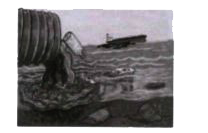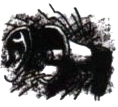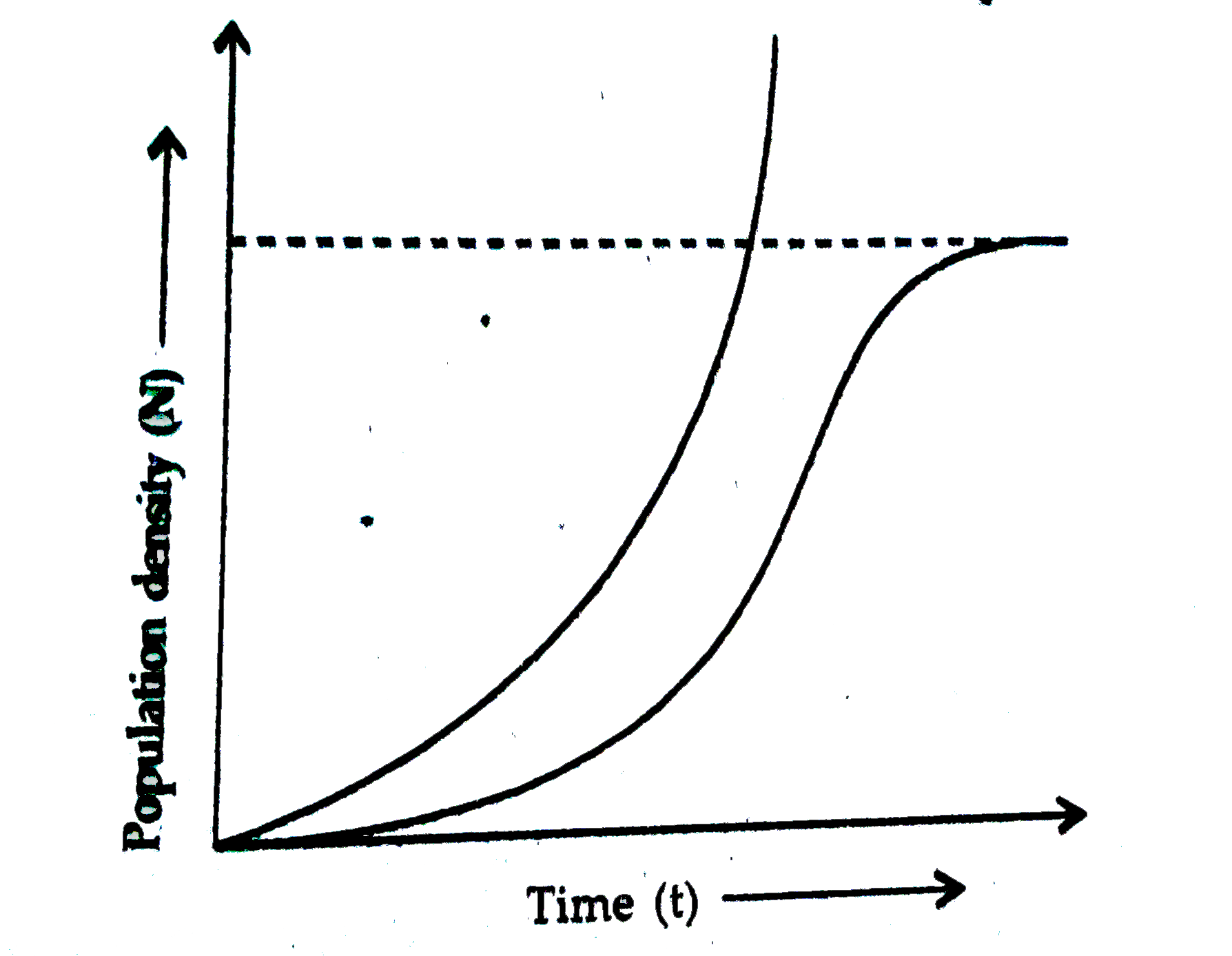"A population has been exhibiting genetic equilibrium". Answer the following with regard to the above statement.
(i) Explain the above statement.
(ii) Name the underlying principle.
(iii) List any two factors which would upset the genetic equilibrium of the population.
(iv) Take up any one such factor and explain how the gene pool will change due to that factor
(i)Allele frequencies in the gene pool of a population remains unchanged for generations:
(ii) Hardy-Weinberg equilibrium
(iii) Any two factors - Mutation/Natural selection / gene flow/genetic drift/ migration.
(iv) Mutation changes alleles/Natural selection: brings about greater reproduction of certain alleles
Topper's Solved these Questions
- BOOK - TRUEMEN BIOLOGY ENGLISHCHAPTER - GENETICS AND EVOLUTION EXERCISE - SECTION-D25videos
GENETICS AND EVOLUTION
- BOOK - TRUEMEN BIOLOGY ENGLISHCHAPTER - GENETICS AND EVOLUTION EXERCISE - SECTION-B38videos
GENETICS AND EVOLUTION
- BOOK - TRUEMEN BIOLOGY ENGLISHCHAPTER - GeneticsEXERCISE - ASSERTION AND REASON122videos
Genetics
- BOOK - TRUEMEN BIOLOGY ENGLISHCHAPTER - HUMAN HEALTH AND DISEASEEXERCISE - MULTIPLE CHOICE QUESTIONS209videos
HUMAN HEALTH AND DISEASE
Similar Questions
A population is exhibiting genetic equilibrium. Answer the following with regard to this statement.
Explain the above statement.View SolutionA population is exhibiting genetic equilibrium. Answer the following with regard to this statement.
Name the underlying principle.View SolutionA population is exhibiting genetic equilibrium. Answer the following with regard to this statement.
Name any two factors which could upset the genetic equilibrium of the population.View Solution(a) How does the Hardy- Weinberg's expression (p2+2pq+q2=1) explain that genetic equilibrium is maintained in a population ?
(b ) List any two factors that can disturb the genetic equilibrium.View SolutionStudy the picture given below and answer the following questions :

(i) Identify the type of pollution.
(ii) Name one pollutant that causes the above pollution.
(iii) Mention the impact of this pollution on human health.
(iv) State one measure to control this pollution.
(v) What is a 'Pollutant ? Explain the term.View SolutionGiven below is a representation of a kind of pollution. Study the same and answer the questions that follow :

(i) Name the kind of pollution.
(ii) List any three common sources of this pollution
(iii) Mention three harmful effects of this pollution on human health.
(iv) Explain the term 'Pollutant'.
(v) Name two soil pollutants.View SolutionWhich of the following statement are true for genetic drift ?
I. It upsets the Hardy-Weinberg equilbrium
II. It operates only in small population
III. It is responsible for preserving certain genes
IV. It is responsible for eliminating certain genesView SolutionStudy the graph given below and answer the questions that follow:

i) Write the status of food and space in the curves a) and b).
ii) In the absence of predators, which one of the two curves would appropriately depict the prey population?
iii) Time has been shown on X-axis and there is a parallel dotted line above it. Give the significance of this dotted line.View SolutionGiven below are four statements (A-D) , each with one blank. Select the option which correctly fills up the blank in any of the two statements.
i. Materials to be packaged in the form of vesicles from the ER fuse with the ……face of the Golgi apparatus.
ii. Majority of the chloroplasts of the green plants are found in the ..........cells of leaves.
iii. The nucleolus is a site for active ...........synthesis .
iv. During zygotene, chromosomes start pairing together and this process of association is called ............ .View SolutionConsider a solution of CH3COONH4 which is a salt weak acid and weak base.
The equilibrium involved in the solutions are :
CH3COO−+H2O⇔CH3COOH+OH− ........(i)
NH+4+H2⇔NH4OH+H+ ........(ii)
H++OH−⇔H2O ........(iii)
If we add these reactions, then the net reaction is :
CH3COO−+H+2+H2O⇔CH3COOH+NH4OH ........(iv)
Both CH3COO−and NH+4 get hydrolysed independently and their hydrolysis depends on :
(a) their initial concentration
(b) The value of Kh which is KwKa for CH3COO− and KwKb for NH+4.
Since both of the ions were produced form the salt, their initial concertration are same. Therefore, unless and until the value of KwKa or Ka and Kb is same, the degree of hydrogen of ions can't be same.
To explain why we assume that degree of hydrolysis of cation and anion is same, we needed to now look at the third reaction i.e.,combination of H+ and OH− ions. It is obvious that this reaction happens only because one reaction produced H+ ion and the other prodcued OH− ions. We can also note that this reaction causes both the hydrolysis reaction to occur more since their product ions are being consumed. Keep this in mind that the equilibrium which has smaller value of the equilibrium constant is affected more by the common ion effect. For the same reason if for any reson a reaction is made to occur to a greater extent by the consumption of any of the prodcut ion, the reaction with the smaller value of equilibrium constant tends to get affected more.
Therefore, we conclude that firstly the hydroylsis of both the ions occurs more in the presence of each other (due to consumption of the product ions) than in each other's absence. Secondly,the hydroylsis of the ion which occurs to a lesser extent (due to smaller value of Kh)is affected more than the one whole Kh is greater. Hence we can see that the degree of hydroylsis of both the ions would be close to each other when they are getting hyderolysed in the presence of each other.
For 0.1 M CH3COONH4 salt solution given, Ka(CH3COOH)=Kb(NH4OH)=2×10−5.
In the case : degree of hydrolysis of cation and anion are :View Solution

